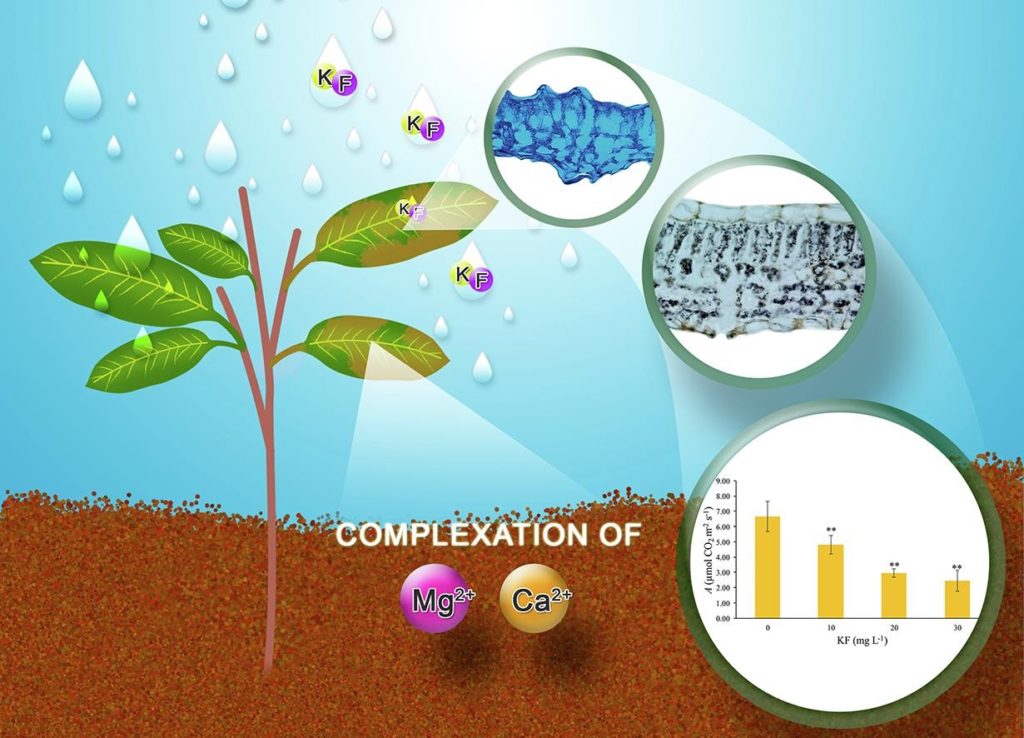Abstract
Highlights
- Spondias mombin is a potential bioindicator for KF pollution.
- KF caused anatomical, photochemical and nutritional damage in S. mombin.
- Noninvasive techniques were important biomarkers of fluoride activity.
Ecological contamination by air pollutants is a worldwide problem. Fluoride-based compounds are released in large proportions into the atmosphere, soil and water from various industrial sources. These compounds are more phytotoxic to various plants than are other pollutants. The objective of this work was to determine the effects of fluoride in the form of potassium fluoride (KF)-simulated rain, on morphological and physiological responses, macronutrient content and fluoride accumulation in Spondias mombin leaves. S. mombin seedlings were transplanted to 5-liter pots containing Bioplant® substrate in a greenhouse. After acclimatization, the plants were subjected to KF, through simulated rain, at concentrations of 0, 10, 20 and 30 mg L?1, for a period of 9 days. Subsequently, visual and anatomical evaluations, chlorophyll a fluorescence variables, gas exchange, fluoride accumulation and macronutrient content were performed in all plants. KF-treated S. mombin developed necrosis on leaf surfaces with damage of up to 70%, followed by parenchymal tissue alterations characterized by cellular collapse and accumulation of phenolic compounds. We observed photochemical and macronutrient content changes that may compromise development of these plants. The correlation between the analyses suggested that noninvasive characteristics are important tools for detecting environmental pollution, and that S. mombin is an important bioindicator of KF-contaminated environments.
Graphical abstract

